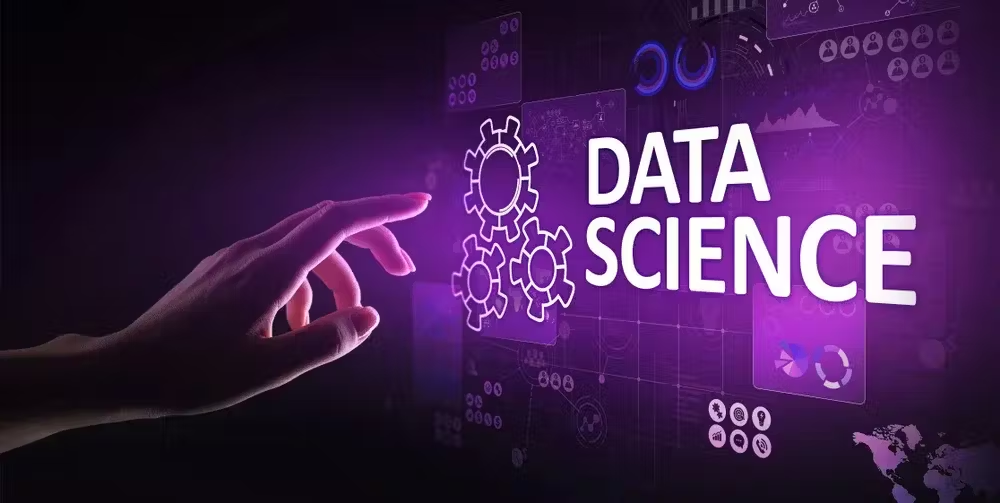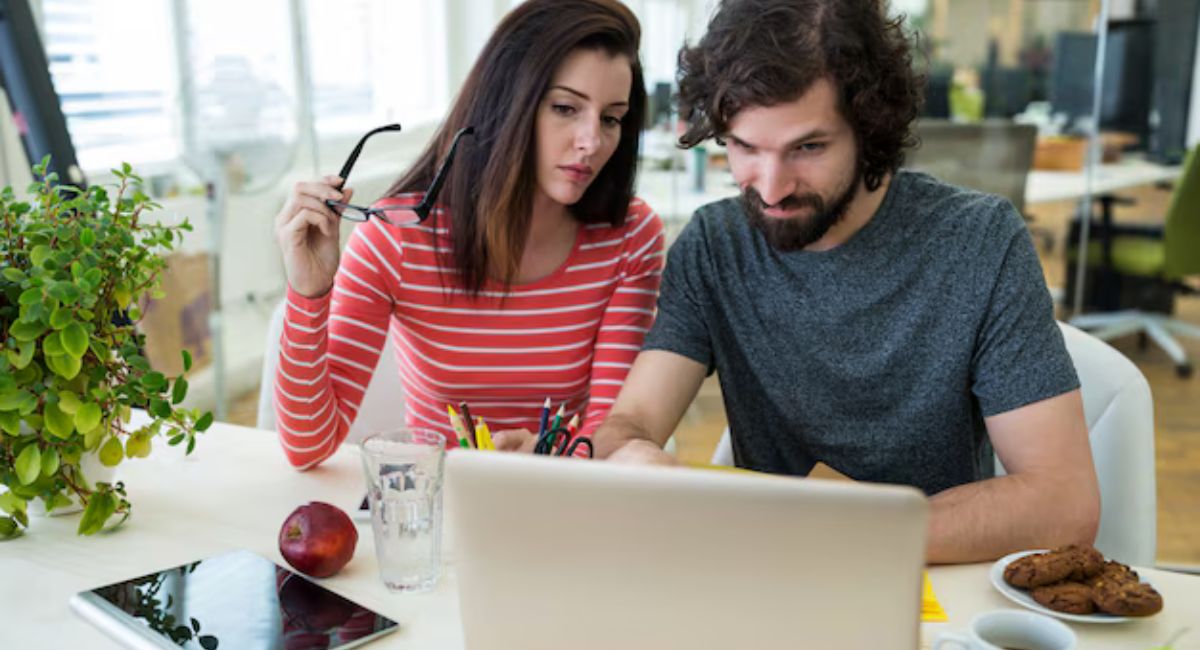TECH
The Power of Data Science: Transforming Insights Into Action

Data science has become the backbone of innovation in almost every industry. From predictions about customer behavior to revolutionizing healthcare and enhancing business efficiency, science is driving impactful changes worldwide. But what exactly is data science, and why is it so integral to modern decision-making?
Whether you are a curious learner, a tech professional, or a business owner looking to maximize your potential, this guide will explore what science is, its core components, real-world applications, and how you can harness its power.
What Is Data Science?
At its core, data science is the art of extracting meaningful insights from both structured and unstructured data. It combines statistical analysis, algorithms, and machine learning to interpret and make sense of complex datasets. The ultimate goal? Empower organizations and individuals to make data-driven decisions that can solve problems, identify opportunities, and optimize performance.
The versatility of data rests on three main pillars:
- Data Collection: Gathering information from various sources, such as sensors, databases, or the internet.
- Data Analysis: Processing and analyzing raw data to find patterns or trends.
- Predictive Modeling: Using machine learning and algorithms to forecast future trends based on historical data.
Why Is Data Science Important?
Imagine the ability to forecast sales, predict medical conditions, or detect fraudulent activity before it happens—all with accuracy and speed. That is the power of data . It helps businesses and organizations operate smarter, reduce costs, and improve customer experiences.
Key Components of Data Science
To understand data science fully, it’s crucial to explore the core components that make it so powerful and versatile.
1. Statistics and Probability
Statistics and probability are the building blocks of data . These concepts allow data scientists to measure variance, infer patterns, and interpret results. For instance:
- Businesses use A/B testing (a statistical method) in marketing campaigns to identify the most effective strategies.
- Sports teams employ probability models to predict match outcomes and refine player strategies.
2. Data Engineering
Think of data engineering as the plumbing of science. It involves cleaning, organizing, and structuring databases to prepare them for analysis. Without a solid data foundation, even advanced analytics tools will yield inaccurate results.
3. Machine Learning (ML)
Machine learning takes data science to the next level by enabling systems to learn and improve without explicit programming. It is vital in processing large-scale data and deriving actionable insights. Common ML applications include:
- Recommender systems like those used by Netflix and Amazon.
- Predictive maintenance in manufacturing, which analyzes data to forecast when equipment will need servicing.
4. Data Visualization
Data visualization tools, like Tableau and Power BI, simplify complex datasets into visual formats such as graphs, charts, or heatmaps. This makes it easier for decision-makers to understand key insights and trends without wading through raw data.
5. Big Data
Data scientists frequently work with “big data”—massive and complex datasets that traditional software cannot process efficiently. Technologies like Hadoop and Spark make it easier to handle these enormous volumes of information.
6. Artificial Intelligence (AI) Integration
AI and data sgo hand in hand. Advanced AI techniques empower businesses to automate processes and uncover deeper insights, accelerating discovery and providing competitive advantages.
Real-World Applications of Data Science
The impact of data is evident in industries worldwide. Here are a few key areas where data science shines:
1. Healthcare
Data science revolutionizes the healthcare industry through:
- Disease Predictions: AI models can analyze patient data to predict diseases such as cancer or diabetes.
- Personalized Treatment: Algorithms assist doctors in creating tailored treatment plans for better outcomes.
- Drug Discovery: Speeding up the process of finding and developing new medications.
2. E-commerce
Online marketplaces leverage data science to:
- Personalize Recommendations: Platforms like Amazon use consumer behavior data to recommend products.
- Optimize Inventory: Predicting which products will sell the most and stock accordingly to prevent excess inventory costs.
3. Finance
Banks and financial institutions use data to:
- Detect Fraud: Identifying irregularities in transaction patterns to flag potential fraud.
- Risk Assessment: Scoring customers on the likelihood of default for loans.
4. Transportation and Logistics
Industries like ride-sharing and global shipping thrive because of data science:
- Route Optimization: Companies like UPS use algorithms to find the fastest and most efficient delivery routes, saving time and fuel.
- Demand Forecasting: Uber analyzes traffic patterns and ride request data to surge prices or adjust availability.
5. Marketing
Data science enhances marketing campaigns by:
- Audience Segmentation: Identifying and targeting specific customer groups with personalized messages.
- Predictive Behavior: Anticipating customer needs, such as what they might want to purchase next.
6. Environmental Science
Data science is increasingly being employed to:
- Predict climate patterns.
- Manage natural resources effectively.
- Monitor deforestation and wildlife conservation through satellite data.
How to Get Started with Data Science
If you’re intrigued by data science’s vast potential, here are steps you can take to start turning data into actionable insights:
1. Learn the Basics
Familiarize yourself with foundational concepts, including Python or R programming, statistics, probability, and data analysis tools.
2. Master Key Tools and Technologies
Familiarize yourself with tools and platforms like:
- Languages: Python, R, SQL
- Big Data Tools: Hadoop, Spark
- Visualization Tools: Tableau, Power BI
3. Enroll in Online Courses
latforms like Coursera, LinkedIn Learning, and Kaggle offer beginner-friendly courses on and machine learning.
4. Practice with Real Datasets
Find free datasets on platforms like Kaggle or UCI Machine Learning Repository to practice your data manipulation and insights extraction.
5. Join a Data Science Community
Engage with professionals and enthusiasts through online forums, LinkedIn groups, or real-world meetups. Sharing insights and challenges will boost your learning curve.
Unlock the Future with Data Science
Data science is more than just a buzzword—it’s a transformational tool driving progress across industries. Whether you’re solving complex problems in healthcare, driving growth in e-commerce, or enhancing supply chain efficiency, enables better decisions and extraordinary innovations.
Want to equip your business with smarter tools and expert insights? Start exploring today, and see how it can transform the way you operate.
Challenges in Data Science
While data science offers immense opportunities, it also comes with a set of challenges that professionals and organizations must address to maximize its potential. Here are some of the most common challenges faced in the field:
1. Data Quality Issues
One of the primary challenges in data science is ensuring the quality of data. Poor-quality data, such as incomplete, inconsistent, or inaccurate information, can lead to unreliable insights and flawed decision-making. Cleaning and preprocessing data often take up a significant portion of a data scientist’s time.
2. Data Privacy and Security
With the increasing use of personal and sensitive data, privacy and security concerns have grown immensely. Organizations must comply with regulations such as GDPR or CCPA to ensure data is handled responsibly. Balancing innovation with ethical data usage is a constant challenge.
3. Scalability
Handling and processing vast amounts of data require scalable infrastructure and resources. Companies often struggle to maintain systems that can keep up with the exponential growth of data while ensuring real-time analysis and decision-making.
4. Algorithm Bias
Bias in algorithms is an emerging concern in data science. If the training data contains inherent biases, the models built on such data can perpetuate and even amplify discrimination, leading to unethical outcomes. Addressing this requires rigorous testing and inclusive datasets.
5. Skill Gaps
The demand for skilled data science professionals far exceeds the current talent pool. Organizations must invest in upskilling their workforce or partnering with educational institutions to prepare a new generation of data scientists.
6. Interpreting Results
Sometimes, translating complex models and results into actionable business insights can be challenging. Data scientists must collaborate with stakeholders to bridge the gap between technical findings and strategic decision-making.
Despite these challenges, the field of data science continues to evolve, offering innovative tools and methodologies to tackle these issues effectively and unlock its full potential.
TECH
Designing the Perfect Website for Clingr Users

Creating a Digital Home That Engages and Converts
Your website is the digital storefront of your business. For Clingr, a platform designed to bring people closer, having an engaging, user-friendly website is essential to attract and retain users. Whether you’re looking to foster deep friendships or meaningful networks, your website should reflect the values and functionality that Clingr stands for.
This blog will guide you through key principles and strategies for designing the perfect website for Clingr users. From user experience (UX) design to creating visually captivating aesthetics, we’ll explore the elements that contribute to a successful, functional, and conversion-driven website.
Why Website Design Matters
Your website often forms the first impression of your platform. Consider these statistics:
- 75% of users judge a company’s credibility based on its website design.
- If your site takes over 3 seconds to load, 53% of mobile visitors will leave immediately.
For Clingr, a platform that thrives on relationships, a poorly designed website can drive users away before they even sign up! Our goal is to develop a site that embodies your mission of connection and fosters immediate trust.
Guiding Principles for Clingr Website Design
1. Prioritize User-Focused Design
A user-centric design is the backbone of any successful website. For Clingr, you must cater to two types of users:
- The Curious Visitor: Someone exploring your platform for the first time.
- The Active Community Member: Someone already invested in Clingr’s offerings.
Tips to Execute User-Focused Design:
- Intuitive Navigation: Use a clean and straightforward menu that guides users effortlessly. Avoid overwhelming them with too many options.
- Clear Calls-to-Action (CTAs): Buttons like “Sign Up,” “Join Now,” or “Start Connecting” should be prominent and visually appealing. Make users’ next steps feel obvious.
- Personalization: Offer tailored content and suggestions for returning users. For example, recommend groups or communities they might be interested in.
2. Prioritize Speed and Accessibility
Speed and accessibility are essential elements of any modern website. Clingr users expect your website to load fast and be accessible across various devices and browsers.
Best Practices for Speed Optimization:
- Optimize images and graphics for faster load times. Striking imagery is fantastic but shouldn’t compromise speed.
- Minimize JavaScript and CSS files through compression. This reduces file size and enhances site performance.
Accessibility Considerations:
- Ensure compatibility with screen readers.
- Use alt text for all images to cater to visually impaired users.
- Maintain high color contrast to improve readability for all users.
3. Striking the Right Visual Tone
Clingr is all about connection, togetherness, and forming relationships. Your website should embody this ethos visually.
Style and Branding Tips:
- Color Palette: Choose warmer, inviting tones such as blues (trust), greens (growth), and oranges (energy).
- Imagery: Integrate images of people interacting authentically to represent real-world connections.
- Typography: Use modern, clean fonts for readability and professionalism. Ensure consistency across all branding materials.
4. Create Value Through Content
To retain user interest, your website must offer tangible value. Educational content, news updates, and posts from active community members can demonstrate the value of being part of Clingr.
Types of Content to Feature:
- Community Stories: Highlight authentic success stories of individuals or groups who formed meaningful connections via Clingr.
- Expert Blogs: Publish advisory blogs or articles. For example, “How to Build Better Connections Online” or “5 Ways to Build Trust in Digital Communities.”
- FAQs: Address common questions succinctly to help users quickly grasp Clingr’s purpose and functionality.
5. Incorporate Strong Social Proof
Trust is critical in platforms like Clingr, and showcasing user satisfaction is invaluable in building credibility.
How to Feature Social Proof:
- Testimonials: Use real, heartfelt stories from users praising Clingr for its positive impact.
- Statistics (“98% of users said they formed meaningful relationships”): Present credible data points that demonstrate success.
- Media Mentions or Reviews: Have you been praised by notable bloggers or publications? Display those shoutouts prominently.
6. Leverage Artificial Intelligence and Chatbots
Ensure that your visitors always feel guided or assisted, even when you’re offline. AI-integrated chatbots can provide users with real-time answers and help them get started quickly.
Functional Uses of AI for Clingr:
- Welcome new visitors by guiding them to the sign-up process or community spaces.
- Assist with password recovery, account setup, or FAQs.
- Instantly curate personalized suggestions for communities based on users’ specified interests.
Advanced Functionality to Include
Clingr represents modern, dynamic networking. To affirm this, your website needs functionality that exceeds the static web designs of yesteryears.
Key Features to Include:
- Search and Filter Options for easy discovery of communities and events.
- Interactive Features such as user reviews, polls, and surveys to keep users engaged.
- Content Calendar Integration, including reminders for online events or meet-ups.
- Mobile Optimization for perfect performance on tablets and smartphones.
Boost Your Results with Analytics
Building a rapport with your audience doesn’t happen overnight, and measuring success is part of the process. Use analytics tools to determine:
- Which pages users are staying on the longest.
- When and where visitors tend to leave your site.
- Which CTAs are driving sign-ups.
These insights will help you refine your website over time, ensuring its impact continues to grow.
Build Stronger Communities on Clingr
Your website is your most influential tool in showcasing what Clingr stands for and why users should join your platform.
By focusing on user experience, improving accessibility, and incorporating modern web technology, you’ll attract visitors and inspire trust and excitement for your mission.
Whether you’re designing your first site or revamping your current one, always consider your target user base. A well-created digital presence will introduce people to the thoughtful and innovative space you’ve built.
Looking for additional help? Partner with professional designers or developers who can bring your vision to life. For more tips on optimizing community platforms, sign up for our newsletter!
TECH
Understanding the Benefits of Winqizmorzqux Product

When it comes to innovative solutions that streamline processes and elevate experiences, Winqizmorzqux stands out. This product has been designed to bring ease, efficiency, and enhanced functionality to users, making it an essential tool for those seeking cutting-edge technology. But what makes the Winqizmorzqux product so beneficial? And how can it improve your day-to-day operations or lifestyle?
This blog covers the core benefits of Winqizmorzqux and what you need to know to maximize its value.
What is Winqizmorzqux?
Before we explore its benefits, it’s essential to understand what Winqizmorzqux is. At its core, Winqizmorzqux is a [brief description of the product, e.g., an AI-powered tool, productivity software, or a specialized gadget, depending on the product]. It’s designed to address [specific problem] by [specific solution]. Whether you’re a professional, a business owner, or someone looking to improve efficiency, Winqizmorzqux caters to your needs.
Now, let’s take a closer look at why Winqizmorzqux has become a must-have for its growing user base.
Key Benefits of Using Winqizmorzqux
1. Enhanced Efficiency
One of the standout features of Winqizmorzqux is its ability to boost efficiency. By automating repetitive tasks, reducing manual effort, or providing streamlined workflows, users can save time and focus on what truly matters. For example:
- Businesses can reduce operational bottlenecks.
- Individuals can accomplish more with less effort.
This enhanced efficiency translates to increased productivity, whether you’re incorporating Winqizmorzqux into your professional or personal life.
2. Advanced Functionality Packed Into a User-Friendly Design
Not only is Winqizmorzqux powerful, but it’s also intuitive. You don’t need to be an expert to use it effectively. The product’s [specific feature description, e.g., “adaptive interface” or “smart algorithms”] is designed to make your experience seamless and straightforward:
- Easy onboarding for beginners.
- Advanced settings for power users who need more control.
This balance between innovation and simplicity ensures that users of all skill levels can benefit from Winqizmorzqux.
3. Scalability for Long-Term Growth
Winqizmorzqux adapts to your changing needs, making it an ideal long-term solution. Its flexibility allows it to scale alongside businesses or evolving personal tasks. For businesses, this scalability means you don’t need to invest in new tools as your organization grows. For personal users, it means Winqizmorzqux remains beneficial regardless of how your goals or priorities shift over time.
4. Cost-Effectiveness
While innovation often comes at a price, Winqizmorzqux delivers unmatched value. It consolidates multiple features into one product, eliminating the need to invest in multiple tools or solutions.
- Save money on unnecessary subscriptions or add-ons.
- Maximize the value of a single purchase.
5. Superior Customer Support
What truly sets Winqizmorzqux apart is its dedication to excellence, which extends to its customer support. Winqizmorzqux offers comprehensive resources, from detailed guides to responsive support teams, ensuring that users have everything they need to succeed.
Knowing that help is readily available allows users to integrate Winqizmorzqux into their routines.
6. Contributions to Sustainability
For eco-conscious users, Winqizmorzqux reinforces its value with [specific environmentally friendly feature, e.g., energy efficiency or sustainable materials]. Its impact goes beyond functionality; it aligns with modern values that prioritize sustainability.
This makes Winqizmorzqux not just a tool but a responsible choice for the environment.
How Does Winqizmorzqux Work?
Understanding how Winqizmorzqux Product works can help you unlock its full potential. Here’s a quick breakdown:
- Setup – Begin with a simple setup process. Within minutes, Winqizmorzqux is ready to use.
- Customization – Tailor it to meet your specific needs with easy customizations.
- Actionable Insights – Leverage its advanced analytics and real-time feedback to improve outcomes.
Whether used individually or in complex systems, Winqizmorzqux provides significant value at every step.
Who Will Benefit the Most From Winqizmorzqux?
Winqizmorzqux is designed for wide-ranging applications, making it beneficial for:
- Business Owners looking for tools to save costs and simplify workflows.
- Teams searching for collaborative solutions with innovative features.
- Tech Enthusiasts who want to stay ahead with advanced tools.
- Everyday Users aiming to make better use of their time and resources.
How Can You Get Started With Winqizmorzqux?
Getting started with Winqizmorzqux is quick and hassle-free:
- Visit [link to website or store] to learn more.
- Choose the ideal subscription, plan, or configuration for you.
- Enjoy the benefits immediately, supported by onboarding tools and guides.
Whether you’re ready to make a purchase or simply exploring how Winqizmorzqux fits into your needs, [specific actionable next step, e.g., free trial or demo] is available to make your decision easier.
Why Winqizmorzqux is a Game-Changer
Winqizmorzqux represents more than a product; it’s a solution that redefines how users approach [problem or challenge]. It continually proves its worth by enabling efficiency, encouraging innovation, and delivering measurable value. Its [specific standout feature, e.g., design, flexibility, or adaptability] provides a unique combination of unmatched benefits.
Users who integrate Winqizmorzqux into their routines often report [specific user outcome or experience, e.g., reduced workload, better focus, or improved outcomes].
Why Wait? Try Winqizmorzqux Today!
Discover firsthand why Winqizmorzqux Product has become the go-to tool for [the specific audience group mentioned earlier]. Its benefits span efficiency, sustainability, cost-effectiveness, and more. Take the first step by exploring Winqizmorzqux for yourself and seeing the difference it makes.
TECH
The Ultimate Guide to Virtual Reality Headsets: What You Need to Know

Virtual reality headsets have emerged as game-changing devices, altering the way we interact with technology, media, and even one another. But with so many options on the market and constant advancements in VR technology, it can feel overwhelming to choose the right one or even understand what sets each apart.
This guide breaks down everything you need to know about virtual reality headsets—from the features that matter most to their potential applications in entertainment, education, and beyond. Whether you’re a first-time buyer or a seasoned tech enthusiast, you’ll come away with the clarity to make the right decision.
What Is a Virtual Reality Headset?
A virtual reality headset is a device that either completely immerses you in a digital world or augments the physical world around you. It uses high-tech displays, sensors, and software to simulate lifelike experiences, whether you’re playing a game, attending a virtual event, or exploring a 3D-rendered environment.
Most VR headsets feature key components like motion tracking, controllers, and built-in audio systems. These elements combine to create a seamless and interactive experience that makes you feel like you’re truly “inside” the simulated environment.
Types of Virtual Reality Headsets
Not all VR headsets are created equal. Understanding the different types can help narrow down your options based on your needs and intended use.
1. Standalone VR Headsets
Standalone VR headsets, such as the Meta Quest 2, are self-contained units. They don’t require external devices like PCs or consoles to operate. These are ideal for casual users who want a convenient, plug-and-play experience.
Key Features:
- Wireless design
- Onboard storage and processing
- Easy setup
Best For:
Casual gaming, fitness apps, and social VR platforms.
2. PC-Connected VR Headsets
PC-connected headsets, like the Valve Index or HTC Vive Pro, offer cutting-edge graphics and performance. However, they need a high-powered computer to function and are generally more complex to set up.
Key Features:
- Ultra-high-definition graphics
- Wide range of advanced apps
- Precision motion tracking
Best For:
Hardcore gamers, developers, and enterprise-level applications.
3. Console-Tethered Headsets
These headsets plug into gaming consoles like the PlayStation. A popular example is the PlayStation VR2. They are tailored for dedicated gamers but lack the technical versatility of PC-connected models.
Key Features:
- Console compatibility
- Rich game libraries
Best For:
Console gamers who want to expand their gaming experience into VR.
4. Mobile VR Headsets
Mobile VR headsets, such as Samsung Gear VR, are no longer as popular but were an entry point to VR. They used a smartphone as both the display and processing power.
Key Features:
- Accessible and affordable
- Limited performance
Best For:
Light VR experiences for beginners (although largely discontinued).
Features to Look for in a VR Headset
The right VR headset for you will depend on your needs. Here are the key features to consider when shopping for one.
1. Display Quality
Resolution plays a significant role in the overall VR experience. Higher resolution means crisper visuals, which directly impacts immersion. Look for a display resolution of at least 2160 x 2160 per eye for a sharp image.
Also, pay attention to the refresh rate. A higher refresh rate (90Hz or above) ensures smooth visuals, reducing motion sickness.
2. Comfort and Fit
VR sessions can last for hours, so comfort is key. The headset’s weight, strap adjustability, and cushioning should be top priorities. Some high-end headsets offer custom sizing for added convenience.
3. Field of View (FOV)
The field of view determines how much of the digital world you can see at one time. Wider FOVs (typically 100° or above) enhance immersion, making your experience feel less like looking through a pair of binoculars.
4. Motion Tracking and Controllers
Accurate motion tracking allows users to interact with virtual environments seamlessly. Headsets typically use either inside-out tracking or external sensors to monitor movement.
Pair this with intuitive controllers that feature responsive buttons, and you’ll feel completely in control of the virtual space.
5. App Ecosystem
A strong app library ensures you have a wide range of games, experiences, and even productivity tools to explore. Platforms like SteamVR, Oculus Store, and PlayStation Store offer extensive libraries tailored to specific VR headsets.
6. Price Point
VR headsets can range from budget-friendly models under $300 to premium devices costing upwards of $1,000. Your budget will likely determine what features you prioritize. Set a realistic budget and understand the trade-offs you may face.
Uses of Virtual Reality Headsets
VR headsets aren’t just for gamers. Their applications extend across various industries, offering both entertainment and utility benefits.
1. Gaming and Entertainment
Gaming represents the most mainstream application for VR. Platforms like SteamVR and PlayStation VR offer immersive games that push the boundaries of storytelling, interactivity, and design.
Beyond gaming, VR headsets are turning into portable theaters. Platforms like Netflix VR allow users to enjoy movies and shows in a virtual cinema setting.
2. Education and Training
Virtual reality headsets is transforming education by introducing immersive learning experiences. Science students can explore 3D models of human anatomy, and history buffs can virtually “walk” through ancient cities.
Similarly, workplaces use VR for training simulations spanning everything from medical surgeries to engineering tasks. This approach improves learning retention while lowering costs.
3. Fitness and Wellness
VR fitness apps like Supernatural or FitXR help users stay active in exciting ways, merging workouts with gamification. Meditative programs like TRIPP focus on mental wellness, offering immersive environments for relaxation.
4. Design and Creativity
VR tools like Tilt Brush and Gravity Sketch unlock creative potential, allowing artists and designers to create 3D sculptures, blueprints, and models. Many architects and product designers use VR to test prototypes before manufacturing begins.
5. Professional Collaboration
Remote work is more engaging in VR. Tools like Spatial and AltspaceVR allow professionals from around the globe to collaborate in shared virtual office spaces, fostering more connected teams.
The Best VR Headsets on the Market Right Now
If you’re ready to take the plunge, here are the top-rated VR headsets worth considering in 2024.
- Meta Quest 2 (Budget-friendly, standalone, versatile)
- Valve Index (Premium PC-connectivity, advanced controllers)
- PlayStation VR2 (Console integration, exceptional game catalog)
- Pico 4 (Strong performance for standalone users)
Each of these delivers great value in specific areas, catering to different user needs and preferences.
Preparing for a Virtual Future
Virtual reality headsets is no longer reserved for tech aficionados—it’s rapidly becoming a necessity in both entertainment and business. Picking the right VR headset boils down to understanding your priorities, whether it’s immersive gaming, professional use, or exploring revolutionary learning tools.
No matter your reason for stepping into the virtual world, VR technology offers endless possibilities to explore. If you’re still unsure which headset suits you, focus on compatibility with your intended use and start with an option that fits your budget.
The future of tech is truly virtual—and with the right headset, you’re just a step away from experiencing it!
FAQs
1. What is the best VR headset for beginners?
For beginners, standalone headsets such as the Meta Quest 3 or Pico 4 are ideal. They don’t require a powerful PC or console to operate, making them more accessible and easy to set up.
2. Can VR headsets be used for work purposes?
Yes, many VR headsets are designed for professional use. They enable virtual meetings, collaboration, and even advanced training simulations. Devices like the Meta Quest Pro are tailored for business and productivity.
3. Are VR headsets safe to use?
When used responsibly, VR headsets are safe. However, users should take breaks to prevent eye strain and maintain spatial awareness to avoid physical accidents.
4. What accessories can enhance the VR experience?
Accessories like motion controllers, haptic gloves, charging docks, and face pads can enhance comfort and immersion. Consider investing in accessories that align with your specific VR activities.
5. Do I need a high-end PC for VR?
Not necessarily. While some VR devices like the Valve Index require a powerful PC, standalone headsets such as the Meta Quest 3 operate independently, eliminating the need for additional hardware.
6. How much should I spend on a VR headset?
Budget depends on your priorities and use case. Entry-level models typically start around $300, whereas high-end options for gaming or work can range between $600 to $1,000+. Evaluate your needs before committing to a price point.
-

 TECH9 months ago
TECH9 months agoExploring Precision Technologies International: The Future of Advanced Engineering
-

 TECH10 months ago
TECH10 months agoStevens Institute of Technology: Pioneering Innovation and Excellence in Education
-

 NEWS9 months ago
NEWS9 months agoThe NYT’s Take on British Affairs: A Comprehensive Review
-

 FINANCE8 months ago
FINANCE8 months agoInvestiit.com Tips: Maximizing Your Investment Success
-

 HEALTH9 months ago
HEALTH9 months agoThe Ultimate Guide to Physical Therapy Web Design That Converts
-

 NEWS3 months ago
NEWS3 months agoTop 5 Reasons to Follow UKOBIW.com for Your Daily News Fix
-

 CROSSWORD & PUZZLES6 months ago
CROSSWORD & PUZZLES6 months agoVault Opener NYT Crossword: An Informative Guide
-

 HEALTH9 months ago
HEALTH9 months agoThe Allure of Candy Red: A Bold Hue That Never Goes Out of Style
